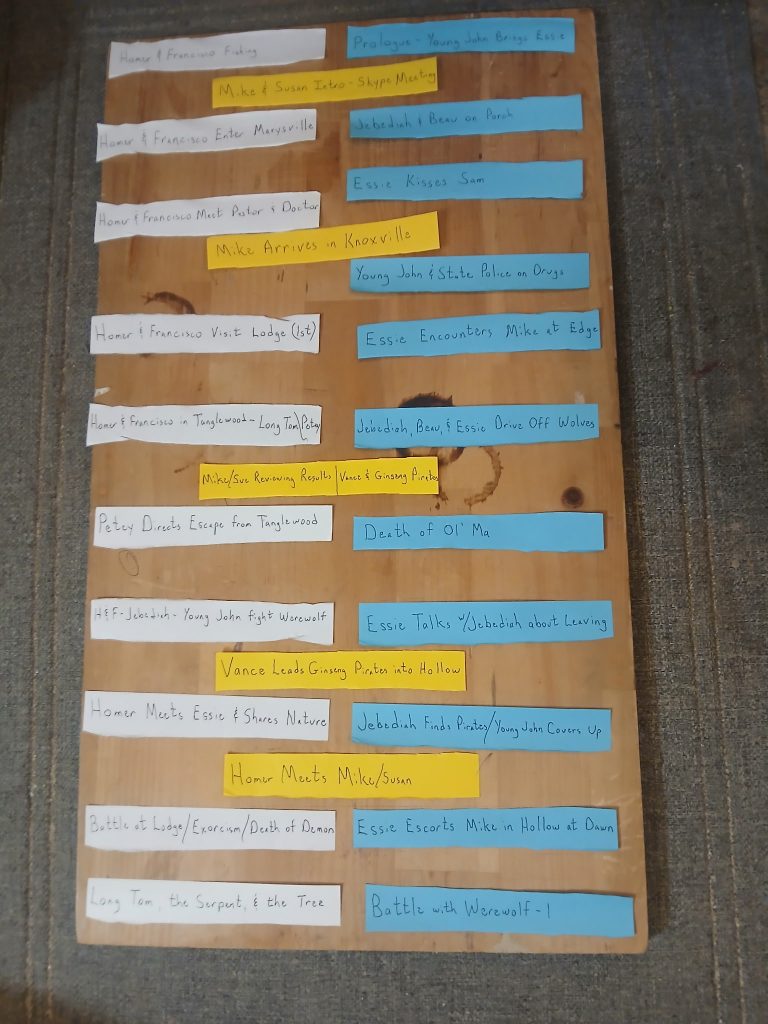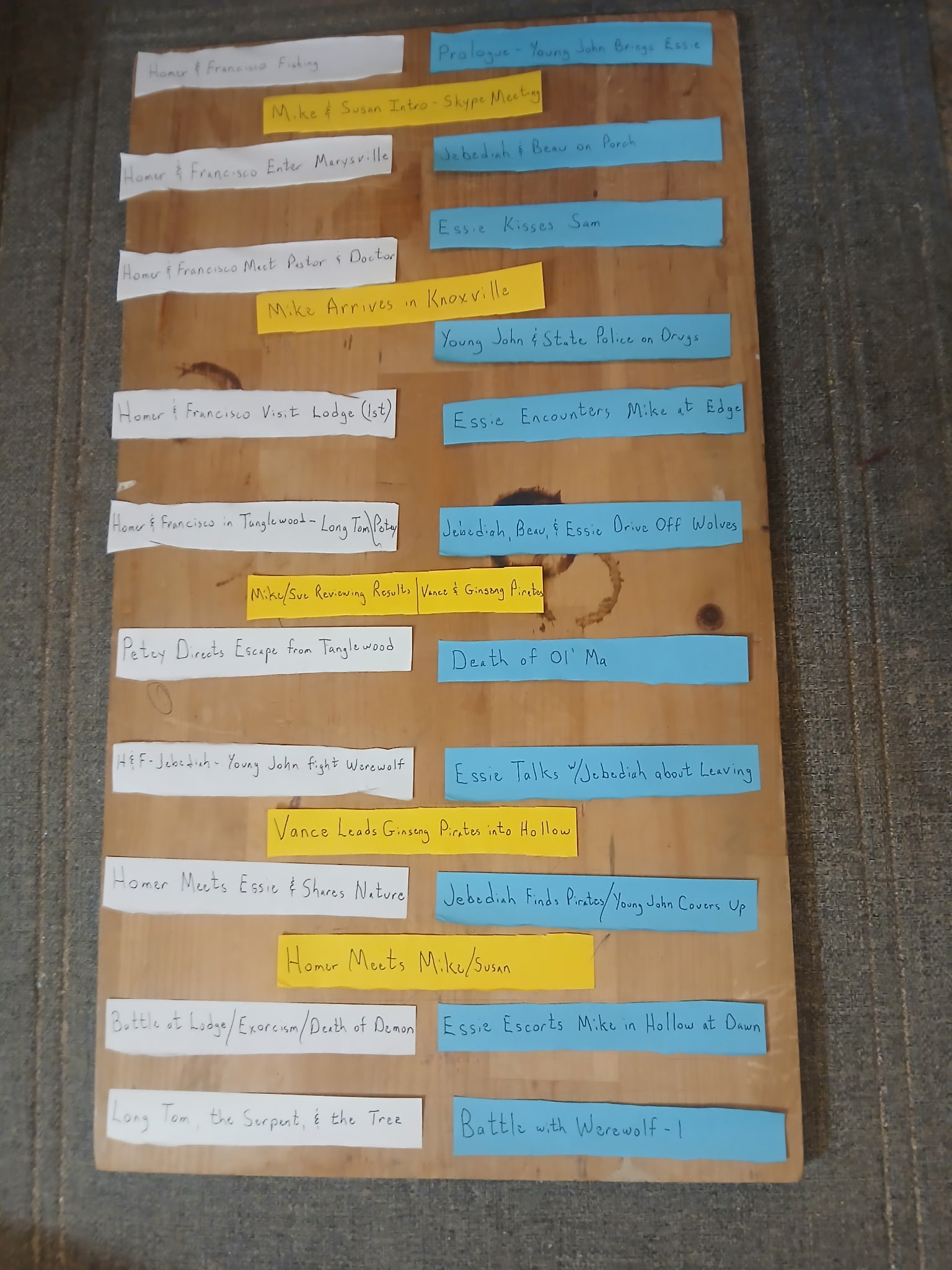When you write a book, you don’t start out with a first sentence and go merrily along to the closing paragraph, pausing only briefly to correct punctuation. The process is much more involved, creating, altering, and often ultimately rejecting a wide range of characters, chapters, and even entire sections of the book. The manner of composition varies greatly from author to author, of course, but surprisingly, it can also vary between books by the same writer. Not all techniques work for all projects. Today, I want to deal with a tool I have used only sparingly in the past but am employing for my current work: the chapter board.
Most books contain multiple points of view (POV) with the story told from the perspective of a few main characters. I was once told that the number of these main characters should be around three and never exceed five, less you dissipate the attention (and emotional commitment) of the reader by spreading focus between too many individuals. This, of course, is a huge steaming pile of bovine excrement proposed by people who want to render art down to the level of science, and I can counter it by simply saying: Game of Thrones.
So, you find yourself writing not just one story, but a series of stories interwoven with each other, a literary orchestra with you as the conductor calling sometimes of the strings, sometimes the brass, sometimes percussion. In most cases, I haven’t any problem keeping these various elements separate in my head, and I often write multiple passages from one storyline before shifting over to another, writing as the whim and the inspiration take me. But I’m starting to use more short chapters in my present work, and it’s not always clear how they align with each other. This is more than simply keeping track of a timeline. Tone and mood – to say nothing of character development – often change over the course of the story, and a wise author will monitor the progression in each storyline segment.
When keeping track of all this becomes too unwieldy, my trick is to write out the title or short description of the chapter on small strips of paper, using different colors for each major storyline (note that a storyline contains multiple characters, each with their own POV). I then arrange them on a flat surface – the chapter board – so I can see the flow of each segment. It’s also useful to see the number of chapters for each storyline. Yes, this is easily done on the computer either as a Word document or an Excel spreadsheet, but cutting and pasting the entries to a new location can quickly become tiresome and annoying. And this is a stage in the process when you don’t need those kind of distractions. Getting a broader view of the entire book can give you an entirely new perspective.
Spoilers for upcoming book in image!

In my present work, the proliferation of the sheer number of chapters and mini-chapters started to become untenable. Two of the blue chapters, in particular, kept shifting from one place to another as I saw issues with the corresponding white chapters, and shifting those strips of paper really helped illustrate the issues involved. Moreover, the arrangement has really helped me focus on some confusion at the lead up to the climax, requiring me to add material. Still not sure if that will be a chapter, a couple mini-chapters, or just additions to what’s already there, but clearly, more is needed.
A word of warning, though. Don’t let the creation of a chapter board – or any other tool – become an excuse not to write. Our minds are devious entities that can dangle substitute actions to make us think we are moving the project forward when we’re wasting valuable time on incidentals. Writing means applying the ass to the seat and the fingers to the keyboard. Be suspicious of anything that diverts or digresses away from that central focus.
Finally, the chapter board can be helpful in gaging the size of the book, which is important given this is the third part of a trilogy. The first book came in at 66,000 words, the second around 70,000, and a rough guess would put this one around 74,000. Still a lot better than the original Paladin Trilogy that was 120,000, 140,000, and 185,000. One final suggestion is to be sure to tape the paper strips down quickly. Running children, curious cats, or the untimely activation of the furnace can play havoc with your carefully orchestrated symphony.

Leave a Reply